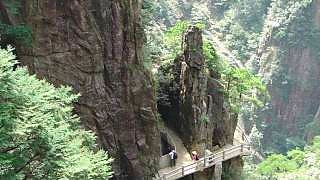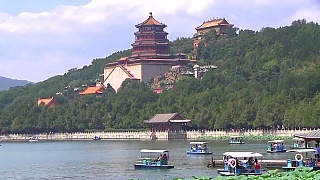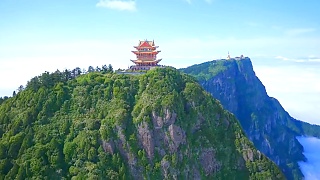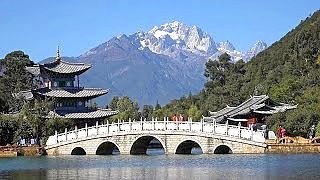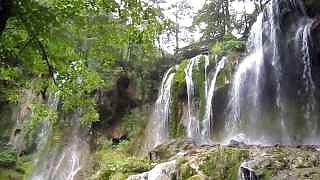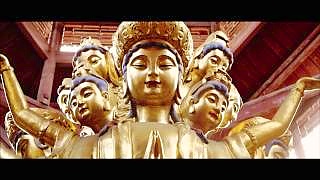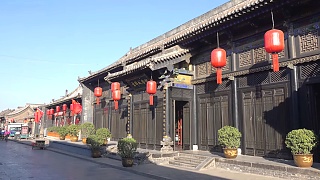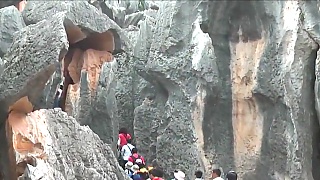
|
With Jason / Living In China ...
DeXing 德兴, JiangXi province - Travel Guide
History
Attractions
Activities
Food
Transportation
Tips
History of DeXing
DeXing, located in JiangXi Province, is a city with a rich history that dates back over a thousand years. Known for its copper mining industry, DeXing played a significant role in China's economic development, particularly during the Ming and Qing Dynasties. The city is surrounded by lush mountains and has been a center of trade and culture, contributing to its unique historical and cultural heritage.
Top Attractions in DeXing
1. Mount Sanqing
Mount Sanqing, a UNESCO World Heritage site, is one of the most famous attractions in DeXing. Known for its stunning granite peaks, unique rock formations, and Taoist cultural significance, this mountain offers breathtaking views and serene landscapes.
2. Lingyan Temple
Lingyan Temple is an ancient Buddhist temple located on the slopes of Mount Sanqing. The temple is known for its peaceful surroundings, beautiful architecture, and the grand statue of Guanyin, the Goddess of Mercy.
3. Yunbi Peak Forest Park
This natural park is a haven for nature lovers, featuring lush forests, clear streams, and stunning views of the surrounding mountains. It's a great spot for hiking, photography, and enjoying the natural beauty of DeXing.
4. Copper Mine Museum
As DeXing is historically known for its copper mining industry, the Copper Mine Museum provides insights into the city's mining history. Visitors can learn about the mining techniques, history, and see various exhibits related to copper mining.
Activities to Enjoy
1. Hiking on Mount Sanqing
Mount Sanqing offers numerous hiking trails that cater to both beginner and experienced hikers. The trails provide stunning views of the mountain's unique granite peaks, dense forests, and scenic waterfalls.
2. Exploring Ancient Villages
DeXing is home to several ancient villages that retain traditional JiangXi architectural styles. These villages offer a glimpse into the region's history and culture, with ancient buildings, narrow alleys, and traditional lifestyles.
3. Visiting Local Markets
Exploring the local markets in DeXing is a great way to experience the local culture and cuisine. Markets are filled with fresh produce, local delicacies, and handcrafted items, offering a taste of the local life.
Local Food & Delicacies
1. Gan Cuisine
Gan cuisine, the traditional cuisine of JiangXi Province, is known for its bold flavors and use of local ingredients. Dishes often feature pickled vegetables, fresh fish, and a variety of spices.
2. Copper Hotpot
A unique dish in DeXing, the Copper Hotpot is named after the city’s historical association with copper mining. This hotpot features a rich broth and a variety of ingredients including meat, seafood, and vegetables.
3. JiangXi Rice Noodles
These rice noodles are a popular dish in DeXing, served in a flavorful broth with toppings such as minced meat, pickled vegetables, and fresh herbs.
How to Get There
By Train
DeXing is well connected by rail, with regular trains running from major cities like Nanchang and Shangrao. The train journey offers scenic views of JiangXi's countryside.
By Bus
There are frequent bus services from nearby cities and towns to DeXing. Buses are a convenient and affordable option for reaching the city.
By Car
Driving to DeXing offers the flexibility to explore the surrounding areas at your own pace. The city is accessible by major highways, making it easy to reach by car.
Travel Tips for DeXing
Plan your visit during spring or autumn for the best weather and to enjoy the natural scenery at its peak.
Learn a few basic phrases in Mandarin, as English is not widely spoken in rural areas.
Bring cash, as some local shops and markets may not accept credit cards.
Respect local customs and traditions, especially when visiting temples and ancient villages.
|

 A guide to beautiful SuZhou 苏州 old town
A guide to beautiful SuZhou 苏州 old town